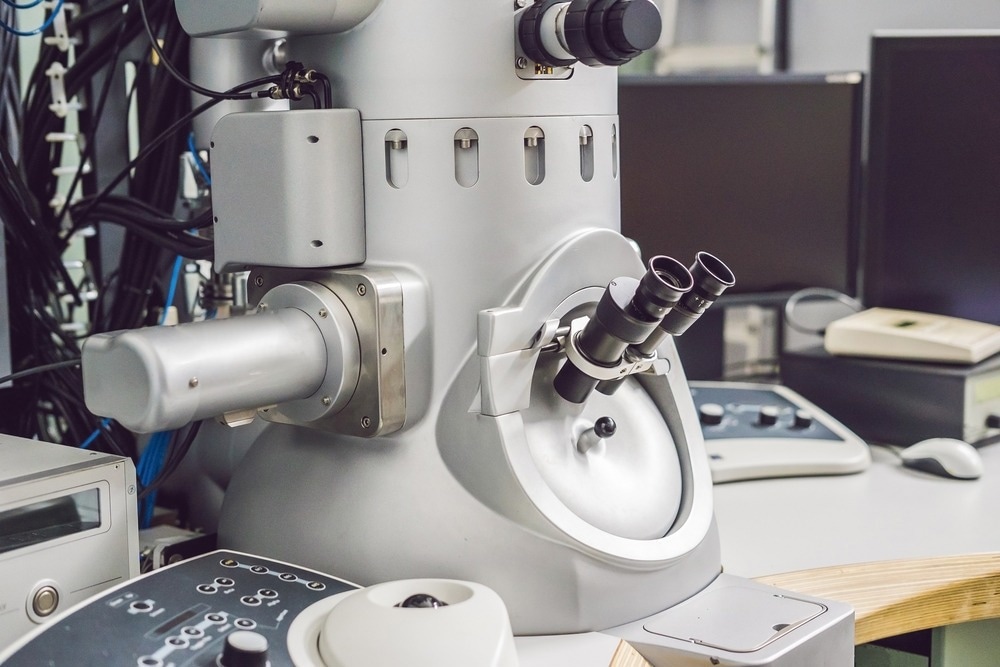In a recent article published in the Journal of Nanotheranostics, researchers from Brazil developed a nano-enabled colorimetric assay for detecting Paracoccidioidomycosis, a fungal infection. This research aims to enhance nanotechnology-based diagnostic methods, offering a promising approach for accurate and efficient pathogen detection.

Image Credit: Elizaveta Galitckaia/Shutterstock.com
Background
Paracoccidioidomycosis (PCM) is a systemic fungal infection caused by Paracoccidioides species, with Paracoccidioides lutzii being one of the causative agents. PCM poses a significant public health concern in endemic regions, particularly Latin America.
Traditional diagnostic methods for PCM often rely on microbiological culture, serological tests, and histopathological examination, which can be time-consuming, labor-intensive, and may lack the desired sensitivity and specificity. Misdiagnosis of PCM as tuberculosis or other respiratory conditions due to overlapping symptoms underscores the need for rapid and reliable diagnostic tools to accurately differentiate fungal infections.
Nanotechnology, particularly the use of gold nanoparticles (AuNPs), has emerged as a promising avenue for enhancing diagnostic capabilities in infectious diseases. AuNPs exhibit unique optical properties, such as localized surface plasmon resonance (LSPR), which can be leveraged for the sensitive and specific detection of biomolecules, including fungal pathogens.
The Current Study
In this study, AuNPs were synthesized using the citrate reduction method described by Turkevich et al. The concentration of the colloidal solution was determined based on the Lambert–Beer law. The extinction coefficient for the plasmon resonance was assumed to be 4.7 × 104 M−1 cm−1, suitable for nanoparticles smaller than 85 nm.
Transmission electron microscopy (TEM) was used to characterize the morphology of the AuNPs. For TEM analysis, a drop of the AuNP suspension was deposited on a grid and allowed to dry at room temperature.
The diameter of the AuNPs was determined hydrodynamically using dynamic light scattering (DLS). In this analysis, 200 μL of the AuNPs was added to a cuvette, and measurements were conducted at 21 °C. The DLS technique provided insights into the size distribution and stability of the nanoparticles in solution.
UV-visible spectra of the AuNPs were collected using a spectrophotometer (NanoDrop, Thermo Scientific, ND-1000) without the need for a cuvette, as the samples could be held by their natural surface tension properties. The spectral analysis allowed the characterization of the optical properties of the AuNPs, including the LSPR phenomenon, which is crucial for the colorimetric detection method.
The concentration of the synthesized AuNPs was calculated to be 7.8 × 1011 particles per mL, providing a reference point for subsequent experimental procedures. Accurate determination of nanoparticle concentration is essential for ensuring the reproducibility and reliability of the colorimetric assay results.
Results and Discussion
The synthesized gold nanoparticles exhibited a quasi-spherical morphology with an average hydrodynamic diameter of 24 nm. TEM analysis confirmed the uniformity and size distribution of the nanoparticles, which are essential for their optical properties and stability in solution. The measured zeta potential of -40 mV indicated good chemical stability against aggregation, a critical factor for the success of the colorimetric assay.
The UV-visible spectra of the gold nanoparticles revealed a single broad absorption band around 526 nm, indicative of the LSPR phenomenon. This characteristic absorption peak is attributed to the collective oscillation of free electrons on the nanoparticle surface, providing valuable information for the quantification and analysis of the AuNPs.
The colorimetric assay utilizing the gold nanoparticles showed distinct spectral differences between positive and negative tests for Paracoccidioides lutzii detection. The integration of spectral regions and the application of logarithmic calculations based on the ratio of integrated areas allowed for the classification of positive and negative tests with high sensitivity and specificity. The graphical method developed for result interpretation facilitated the rapid and accurate identification of P. lutzii presence.
The successful implementation of the nano-enabled colorimetric assay demonstrated its potential as a reliable and efficient method for detecting fungal infections such as Paracoccidioides lutzii. The high sensitivity and specificity of the assay, coupled with the straightforward data analysis techniques, make it a promising tool for clinical diagnostics.
The ability to differentiate between positive and negative tests with precision underscores the importance of nanotechnology in enhancing diagnostic accuracy and improving patient outcomes.
Conclusion
The study concludes that the nano-enabled colorimetric assay holds significant potential for accurately detecting P. lutzii in clinical samples. The approach demonstrated 100 % sensitivity and specificity in distinguishing between positive and negative tests, offering a promising tool for improving the diagnosis of PCM. The research highlights the importance of nanotechnology in advancing medical diagnostics and underscores the significance of precise pathogen detection in improving patient outcomes.
Journal Reference
Filho, OOC., et al. (2024). Nano-Enabled Colorimetric Assay for the Detection of Paracoccidioides lutzii: Advancing Diagnostics with Nanotechnology. Journal of Nanotheranostics. DOI: 10.3390/jnt5030005